- Belgian Beer
- Belgian Breweries
- City Guides
- About Belgium
- Belgian Food
- Cooking With Beer
- Login / Register

Shopping cart
- No products in the cart.
Return To Shop

Brasserie de Rochefort

The Beginning – Like Chimay and Orval , fellow Ardennes Trappists, Rochefort owes much of its mystique to its setting. The abbey of Our Lady of Saint-Remy is an oasis of peace on the fringes of the modern world. There is little here to distract you from a rhythm of life consisting of manual work, prayer and sleep – exactly as preached by St. Benedict.
The library, the refectory, the reading room, the cloisters, even the brewery... everything here breathes simplicity and serenity. And nothing hinting at the abbey’s stormy past.
It all started peacefully enough, in 1230, with the establishment of Le Secours Notre-Dame. Rochefort's count, Gilles de Walcourt, and his wife, founded this convent one-and-a-half kilometres away from the town of Rochefort.
It wasn't until 1464 that Rochefort saw the arrival of Cistercian monks, as part of a religious order 'swap-over'. They gave up their abbey, Félipré near Givet, to the nuns, and proceeded to make Rochefort's abbey their home. Then came the marauding. The abbey was destroyed first by Protestant armies, in 1568. Then it was the turn of troops from Lorraine, who pillaged in 1650. The abbey was soon rebuilt, only for the church and abbey buildings to be demolished again, during the French Revolution.
In 1797, the remaining abbey properties were confiscated. It wasn't until 1887 that, once again, the monks re-erected their religious buildings.
But the new Trappist complex only officially reclaimed itself as an abbey in 1912. Through it all, though, the monks have done their best to keep the beer flowing. Archives indicate that brewing activity has taken place here since 1595. This brewing tradition, albeit only for the monks’ consumption, came to an abrupt end during the French Revolution. The French army occupied the region, and the abbey was plundered by the region’s inhabitants.
The rebuilt brewing hall was first taken back into use in 1899. Brother Zozime from Dongen (in the Netherlands) was the first of the new line of brewmasters. In later years, Father Dominique was to take brewing lessons at Leuven University, so that the notoriously volatile brewing quality could be brought under control.
Then war came-a-calling again – the First World War reached the abbey in 1918. The German occupiers removed the copper fittings from the brewing hall, and production was again halted for a while.
When, after the Second World War, Rochefort's beers declined from the success of Chimay's better known (and more consistent) brews, a little fraternal kindness was shown. The Chimay abbey’s Trappists decided to help their confrères improve the quality of their beer. Professor Jean Declerck from Leuven , who laid the basis for the current Chimay beers, together with his brother Théodore, advised the monks to change their production methods, impose micro-biological controls and pay more attention to hygiene.
So it was with Chimay’s assistance, that the Rochefort monks developed the current clutch of beer recipes. Brother Théodore of Chimay was responsible for selecting and isolating the initial yeast strains. However, this yeast was found not to ‘take’ very well in Rochefort, and so it was replaced by a variety sourced from the Palm brewery. In the 1950s the initial light 'refectory' beer was joined by the stronger Rochefort 8 and 10.
Success soon followed, and Rochefort has since carved out a strong niche in the heady Trappist market. But despite all the recent success and accolades, the story of Rochefort continues its twisting and turning.
The abbey recently made the news for all the wrong reasons – a fire broke out in 2010, which fortunately was extinguished quite quickly. But now the abbey is having to campaign for the preservation of the Tridaine spring – a water source integral to the abbey's famous brew.
It is threatened by excavations carried out by the owner of a nearby quarry. It's feared that these works may affect the course of the stream. The monks are worried this will have negative consequences on the quality of the water used to brew their much-praised beers.
The Brewing

It's something that's on the mind of Quality Manager, Santos Gumer. He points out the spring of the Tridaine, a kilometre away, in the hills above the abbey. This is the source of the hard water used for brewing at the abbey. The composition of the water turns out to be unique, and an important factor in the taste of the Rochefort beers. It even influenced the style of beer chosen by the abbey.
That's because Professor Declerck, Chimay's helping hand in the post-war period, advised Rochefort to only brew dark beers: the Tridaine's waters were best-suited to this style, he believed. This spring water, it turns out, is quite rich in calcium.
The recipe for today's Rochefort beers has been established since the 1960s. Minor tweaks are still made of course, depending on the season, and the quality of the ingredients supplied – or when new brewing equipment is taken into service.
But essentially the three Rochefort beers are brewed with the exactly the same ingredients: spring water, the Rochefort house yeast, special pale malts and caramel malts, aromatic and bitter hop varieties (pellets), white and brown sugar and a ‘secret herb’.
The only differences between them lies with the dosages used. The yeast used is actually retrieved from the Rochefort 6 and 8 brews, and used for both the main fermentation and re-fermentation.
The malts used include pilsner caramel, while Hallertau and Styrian Golding hops are used, primarily for aroma.
The brewing and main fermentation process takes one week. After bottling, the beer will re-ferment for fourteen days, in the 'warm rooms', at a temperature of 20 to 23°C.
The Brewers

Thierry Fourneau, plus Luc and Patrick Streignard, are now managing the brewery, with the assistance of Quality Manager Santos Gumer. Rochefort’s annual production is some thirty-five thousand hectolitres, which earns the brewery a place in the Trappist peloton – but not at the head. It is a deliberate choice not to be at the front of this particular, and rather peculiar, race.
Brother Pierre feels that the monks are working hard enough, without being under the additional stress of competitiveness. The Cistercian adage, it seems, applies equally well in the here-and-now as it did in the past.
Their main calling is the monkhood, with the brewery seen simply as a means for helping the abbey to support itself – as well as providing proceeds to go to charity.
A peaceful atmosphere is what the monks strive for most of all. Just to show what they mean by this, consider that the bottling plant is not actually operated at full capacity. If it did, the noise would interfere with prayers.
The Rochefort brewing hall is often described as ‘the most beautiful in Belgium’; it is looks like something akin to a ‘beer cathedral’, thanks to its peculiar dimensions (eight by thirty metres) and its tall, narrow leaded windows.
This handsome hall, with its copper boiling and filtering kettles, was last kitted out in 1960. A particularly remarkable feature is that the interior of the kettles is also made out of copper.
Most breweries nowadays use stainless steel kettles, even if the outside is made out of copper to please the eye. Rochefort remains traditional to its core.
- Rochefort 10
- Rochefort 6
- Rochefort 8

Despite all that visual glory and heritage, the abbey and its brewery are sadly not open to the public. There is also no on-site cafe or tavern where you can taste these famous beers, or have lunch. However, the town of Rochefort offers plenty of opportunity to do so. A number of local restaurants and cafés have the Rochefort beers on their menu.
The town of Rochefort sits in the splendid surroundings of the Famenne, a region of low foothills building up to the Ardennes. Although many tourists head straight for the misty hills of the Ardennes , it is worth stopping off in the Famenne.
It's a landscape characterised by ragged woodland and gently undulating meadows. And if you want to locate the source of Rochefort's water, after some sleuthing you should be able to stand at the source of the Tridaine.
The spring is found on the hillside, some 40m higher than the abbey. In close proximity you will see the remains of a quarry, where red marble was once excavated. This stone was used in the construction of the Church of Saint-Loup in Namur .
If you want to extend your stay in the area, you can easily find a hotel or camping site in this tourist region. And the reason to linger a little longer? Some undiscovered brewery gems. One not widely known is that of Eprave, near Rochefort, which is home to a microbrewery. Brasserie de la Lesse now occupies the buildings of the former Brasserie Rochefortoise. Sample their Cambrée, Chinette Blonde or Rouge-Croix.
The Location

The Famenne has much to offer history buffs. Alongside the road from Rochefort to Eprave you will come across Merovingian cemeteries, dating back to the 9th-century AD. This region was quite densely populated, even before the Middle Ages.
The Malagne archaeological park takes you back to these ancient times. This is where one of the largest Roman villas in Northern Gaul was excavated and it has been restored, in part. It is thought that the small town of Rochefort has been fortified since Roman times.
The ruins of the fortified castle now offer splendid views over Rochefort. A number of archaeological finds are on display in the museum. The Lhomme, a tributary of the Lesse River, has sculpted the impressive ‘de la Lorette’ cave system.
To get to La Lorette, take the quaint tram from the centre of Han-sur-Lesse, which will wend its way right to the cave entrance. It's well worth taking the short trip. You will see some quite astonishing grottoes, with impressive names like the Minaret, the Mystérieuses, and the Salle d'Armes (complete with its newly installed backdrop of sound and light).
The immense Dôme (with a height of 129m), is particularly grand. You can then take a boat to explore the subterranean river, until you finally see the light at the end of the tunnel.
During your descent you can admire glittering halls and galleries. The Lesse itself snakes through a landscape that is most picturesque, partly to its many long-flowing meanders. A tourist train can take you through the nature reserve of Lesse et Lhomme (250 hectares), where the many animals roam, part-wild.
Getting There & Around

Take the E411 (Brussels-Luxembourg motorway) or the E42 (main artery between Doornik and Namur) followed by the E411. Either way, you'll exit the E411 at junction 23, heading in the direction of Han-sur-Lesse and Rochefort. The train journey from Brussels to Jemelle takes 1 hour and 45 minutes. Jemelle is located 3km from Rochefort, and the 424 bus will complete the final leg to Rochefort.
Walkers will find much to their liking in the Famenne region, a green region famous for its caves and natural beauty. A detailed map is pretty much essential, though, to help you discover this area’s rich cultural and historic heritage.
You can choose from 27 listed pathways, in and around Rochefort itself, varying in length between 3 and 12 km. And there are a further 44 signposted circular walks, that'll take you right back to where-ever you started from.
Cyclists will enjoy the stretch (21.3 km) from Jemelle to Houyet, alongside the former 150 railway track. This is by far the best way to discover the many faces of the valley of the Lesse.
The trail takes in a number of bridges, across first the Lhomme, and then the Lesse. It also, intriguingly, provides three old rail tunnels to pedal through, including the 464m long Hour-Havenne tunnel. The Lessive – Ave-et-Auffe cycle track (12 km) is nice alternative, one that will take you through woodland, beautifully-restored houses and the Sanctuary of Gethsemane.
Gastronomy, Food & More Beer

Like many abbeys, it's not just the beer that Rochefort is famed for – cheese plays its part too. Unlike the beer, though, the Rochefort cheese is produced outside the abbey walls, in a separate workshop. This sports the latest high-tech equipment, and is found in a nearby business park.
While the monks are behind the cheese's recipe, which was revived in 1999, the cheese-making these days is done by Beurrerie Mathot-SOFRA, one of Belgium's biggest buttery-and-cheese company. The cheeses are young, semi-mature and many-flavoured. The virgin taste of this semi-hard cheese has a pleasant, slightly sour flavour.
But there are also more complex flavours to hand. Varieties available include those containing seaweed, hazelnuts and Trappist beer – the obligatory glass of Rochefort, naturally, has to makes an appearance. The Trappist cheese is steeped in the beer for seven days so that the taste permeates right through to the centre.
The cheese is also steeped in a saline solution that contains a very specific lactic acid bacteria (' morge ), a process that helps form the characteristic Rochefort colour and taste. The cheese remains submerged for between one and three months, and during this time the cheesemaker will turn the cheese over every two days.
Maturation (' affinage ') is done at a constant temperature and humidity in the cellars, where the specific lactic acid bacteria are thriving. It is there that the typically rich taste fully develops, the texture also improving, with the cheese becoming supple and creamy inside, while a crust forms outside. This crust is then rinsed in a saline solution, so as to keeps its suppleness, and it assumes a golden yellow to red-brown colour.
Outside of the abbey-influenced gourmet delights, there's plenty else to excite the palate. Here in the Rochefort region, the ‘ terroir ’ tends to take on an Ardennes flavour, with pork, venison, wild boar and hare. Venison is often roasted on the bone, in the oven, using Ardennes butter from Rochefort. The recipe isn't complete without forest funghi, such as ceps, chanterelles or hedgehog mushrooms.
Fish lovers will find local pike-perch, or North Sea cod, depending on seasonal supply. And you can't keep the beer away from the food here in Rochefort. Good tips to try include chicken fillet in a Rochefort Trappist sauce; veal kidneys prepared with Rochefort; a sabayon with Trappist or Ardennes pâtés; and sausages, also with Trappist beer.
Tourist information for Rochefort:
VVV Rochefort Rue de Behogne 5 B-5580 Rochefort Tel: +32 (0)84/34 51 72 Web: www.valdelesse.be

Metal Beer Signs
Shop from our colourful and durable collection of beer signs , all with a vintage aged patina so they will look great in any home, or man cave or garden bar. With four pre-drilled holes, these high-quality retro style metal signs are easy to hang on any wall and are the perfect gift for any beer lover. Multi-buy discount applied in cart with worldwide shipping available.

Related Posts
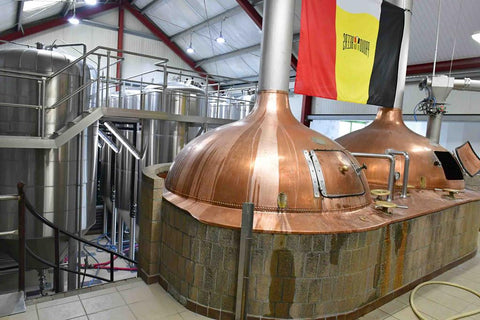
Brasserie de Brunehaut
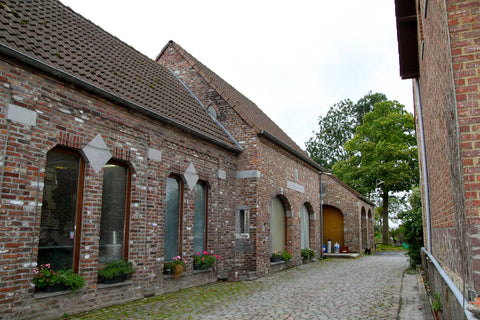
Brasserie de l’Abbaye des Rocs
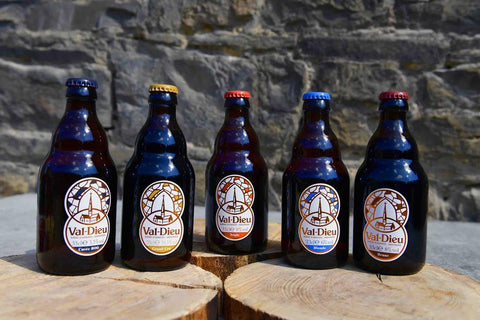
Brasserie de l'Abbaye du Val-Dieu
Newsletter subscribe, comparing box.
- Tour Account ›
- Travel Forum ›
- Travel Forum
- To the West
- Brasserie de Roch...
Brasserie de Rochefort
hello, i am trying to find information on visiting Brasserie de Rochefort (Rochefort Brewery) located inside the Abbey of Notre-Dame de Saint-Rémy Rick's guest recommended this monastery "in the middle of nowhere" for both its beer and its cheese in his Belgium Travel Tips podcast from 2011 (around 21:15 of the podcast) - his guest indicated that it was possible to have a tour and try their beer which is in a 5,000 gallon vat. i have located the website ( http://www.abbaye-rochefort.be/index.php - in French and Dutch) - it mentions a hotel with contact numbers and i believe it says the monastery can be visited but no additional information is listed. can anyone offer information on this? we are happy to make the 2.5 hour drive from Bruges and hope to be rewarded with beer and cheese on the other end! thank you, Erica
The website you linked mostly has information only on the abbey itself, with only a little bit about the attached brewery. It appears they operate a guesthouse that can lodge up to 20 people, with reservations, although from what I'm reading, the purpose of the guest house is for a spiritual retreat, not for casual beer tourism. The abbey itself is not open to visitors (as is typical of most Belgian abbeys). I see no information on the website about an attached brasserie, although most of the Trappist breweries operate one outside of the abbey premises. Abbey Maredsous (up river from Namur and also located in the middle of nowhere) is a little more open to visitors, although you can't visit the brewery (and by the way, few Belgian brewers, monastic or otherwise, open their facilities regularly to visitors). In addition to their three varieties of beer, they make some delicious cheeses and hams.
Hi Erica, We visited Rochefort last fall as part of a Beer Tour in Belgium. The Abbey is out in the countryside, not in the village of Saint Remy. From my understanding, the abbey only allows a few tours per year to visit...I am not sure about individual persons traveling on their own. When we visited, we tried several Rochefort beers served with crispy cookies in a special little tap room as the guest of Pere Jacques, the former abbott. We were allowed to wander about a bit but were not allowed inside any of the abbey buildings nor in the brewery portion. We did get to visit inside the newly renovated cathedral with one of the monks as our guide. My suggestion would be to contact Mike Saxton at BeerTrips.com ( www.beertrips.com) ; OR to call the abbey directly to ask if you could visit. Good luck! The Rochefort beers are lovely. Jennifer
Erica, I think Tom is right that it is usually pretty difficult to get into the abbey breweries unless you are part of a pre-approved tour. That being said, we had a full tour of the Orval abbey ruins and brewery production area and it looked like there were other visitors there at the same time. At Chimay, no access at all, we just sampled the beers and cheeses in the roadside Chimay brasserie. You can also visit Cantillon lambic brewery in Brussels - they have quite a nice tour + tastings and the building is very interesting. Good luck! Jenn
Thanks for the beer tours link; I'm scheming already....
Southam, Happy scheming! We really, really enjoyed The Great Beers of Belgium 2012 trip. Mike is a great guide! The trip is nicely balanced with beer and non-beer related touring/activities. I am the "beer-wife" and my husband was worried that I would get bored. Not so! Touring the old breweries and monasteries was very interested and in each city we visited, the tour included a walking tour with a local guide which was a great way to see the city. And there was plenty of free time for shopping/sight-seeing on our own. And the hotels are great, very centrally located - you can walk to many sights. Hubby kept a record of all the beers we tried...over 70 new beers on the trip. Hope it works out for you to go! Jenn
This topic has been automatically closed due to a period of inactivity.

Home » Travel Guides » Belgium » 15 Best Things to Do in Rochefort (Belgium)
15 Best Things to Do in Rochefort (Belgium)
The little town of Rochefort is wrapped in a loop in the Lomme River, under the eerie ruins of a Medieval castle.
The region around Rochefort is the Famenne, where the limestone hills have been hollowed out by the Lomme and Lesse Rivers, creating labyrinthine cave systems.
There’s one right on the edge of town, while the endless Caves of Han-sur-Lesse to the south are a famous destination, and part of an estate that includes all sorts of other visitor attractions, like museums and a safari park for European species.
Beer aficionados may know Rochefort for the world-class Rochefort 10, a potent dark ale brewed behind closed doors by the Trappist monks of Rochefort Abbey.
1. Grotte de Lorette-Rochefort

The entrance to this cave system is only a brief walk from the centre of Rochefort and features six subterranean chambers.
The cave has a Christian name that comes from the chapel of Our Lady of Loreto on the surface.
Unusually, the Cave of Lorette descends sharply, almost vertically, into the earth.
A 90-minute guided visit begins in the new pavilion with a movie, Videokarst, which delves into geology and tectonic phenomena.
At 60 metres below the surface you’ll be in the Salle du Sabbat (Sabbath Chamber) where your guide will release a little hot-air balloon to show off the cathedral-like scale of this space.
This is followed by a light and sound show, before you return, blinking, to daylight.
2. Grottes de Han-sur-Lesse

A five-minute trip south on the N86 and you’ll be at an enormous estate, set around caves gouged from a limestone hill by the Lesse River.
Southeast of the cave entrance you can see where the Lesse plunges into the earth down a sinkhole at the mysterious Gouffre de Belvaux.
It stays underground for two kilometres before rising to the surface once more.
The Caves of Han-sur-Lesse were mapped out in the 18th and 19th centuries, but had been frequented by humans for many thousands of years before.
The only way to reach the entrance is by a vintage tram, an artefact from a century-old transport network, departing from the centre of the village.
A mind-boggling 14.25 kilometres of galleries have been discovered to date, and you can walk a course two kilometres long in epic chambers lit with energy-efficient LEDs.
The largest chamber is La Salle du Dôme, 150 metres wide and with a ceiling soaring to 127 metres.
3. Parc Animalier du Domaine des Grottes de Han

The Massif de Boine overlooking the caves shelters a 250-hectare native safari park that first opened in 1970 and shows the species that once resided in temperate Western Europe . The park’s inhabitants are able to roam in large enclosures, and can be seen either on foot from a special trail, or a “Safari Car”, a kind of tourist train pulled by a truck.
There are around 20 species at the park, counting wolves, wild cats, Przewalski’s horses, lynxes, ibexes, brown bears, various deer species, Highland cows and Poitou donkeys.
That walking trail is five kilometres long, and is accompanied by tree-top observation posts, benches and picnic tables, as well as a shuttle bus that will carry you to the bear enclosure.
4. Parcours Speleo

Hardy explorers can go off trail and play the part of a speleologist on a guided journey through the Caves of Han-sur-Lesse.
You’ll be kitted out in boots, overalls and a helmet with a light to scramble through the river mud and scree and go places that are off-limits for ordinary visitors.
The Parcours Speleo follows a loose theme, as you hunt for the treasure left by an infamous group of brigands that once hid out in the caves.
Book online to avoid queues.
5. Le PréhistoHan

The Caves of Han-sur-Lesse have more than 9,000 years of human history, which has left behind a lot of evidence dating from the Mesolithic to modern times.
These are displayed at the PréhistoHan exhibition, abounding with finds like spear and arrowheads, pottery and jewellery, much of which dates to the Late Bronze Age, around 3,000 years ago.
The museum also covers the riveting history of the discovery of the caves, and has memorabilia from the first complete exploration in 1817. You can view a large-scale model of the system, rendered for the 1939 Liège International Water Exhibition, and discover all you need to know about the geology of the caves.
6. Han 1900

Our final attraction at Domaine des Grottes de Han is still worthwhile, by any measure, especially if you’re interested in work and domestic life in the Famenne in times past.
Han 1900 has more than 50 dioramas showing scenes from everyday life.
The museum is enriched with some 5,000 authentic tools from the period, and takes you around dozens of places of business, including a general shop, bakery, laundry, shoemaker, farrier, tinsmith, blacksmith’s forge, clockmaker, cooper, potter and many more.
7. Château Comtal de Rochefort

For many centuries until the start of the 19th century Rochefort was under the watch of the largest castle in the Famenne.
Even though it’s in ruins today, the Château Comtal de Rochefort still holds away overr the town from its rocky ridge at the base of that loop in the Lomme River.
In its time, the castle has been in the hands of some of the most important noble families in Western European history, like the House of La Marck.
You can head up to this perch to view the surviving stonework, check out interpretation boards and soak up a view that rolls out for miles across Rochefort and the Famenne.
8. Malagne – Archéoparc de Rochefort

Two thousand years ago there was a palatial Roman villa just east of modern day Rochefort and commanding a huge swath of farmland in northern Gaul.
The ruins of the villa have been carefully excavated and labelled, and can be explored on stairways and footbridges.
On paths through the Archéoparc you can find out about the ancient domestic species that lived on this land, discover the various trades in Roman times and see reconstructions of the farm’s old buildings and implements from the era like a towed harvester.
A nice touch is the Roman garden and vegetable patch, planted with 350 species common in Roman times.
9. Château de Lavaux-Sainte-Anne

In the 15th century, the Lord of Lavaux Jean II de Berlo, loyal to Louis de Bourbon, Bishop of Liège, built this fine moated castle a brief drive west of Rochefort.
This property never had great strategic value for long, but was made more habitable down the years and today is considered among the most beautiful in Belgium, blending Late Gothic with Renaissance architecture.
There’s a powerful keep with limestone walls 2.5 metres thick, as well as a drawbridge and three smaller domed towers.
The castle is open to the public, and has three museums inside.
One goes into the lifestyle of the Lords of Lavaux with a snapshot of domestic life in the 1600s.
In the museum on the first floor you can study the ecology and natural history of the Famenne region, while the sprawling cellars and dungeons has an exhibition about the reality of Famenne peasant life in the 1800s and early-1900s.
10. Rochefort Abbey

The Cistercian Abbaye Notre-Dame de Saint-Rémy is a pleasant walk up the road from the town centre, although access is restricted to just the abbey church.
The abbey’s history dates back to a Cistercian monastery for nuns in the 13th century, and these were replaced by monks in 1464. The monastery was suppressed and demolished in 1797 during the French Revolution, but in 1887 a monk from the Trappist Abbey of Achel re-founded Rochefort Abbey on this site.
The Trappist brewery here, a source of income for 500 years, is famed in beer circles for what may be the best quad in the world (Rochefort 10). The Cistercian Order of the Strict Observance puts the abbey off the tourist map, but you will be able to visit the sparsely decorated church to attend prayers.
11. Rochefort Beer

That seclusion required by the monks means that you can’t visit the brewery, and there isn’t even a cafe on site.
But of course there are brasseries, cafes and restaurants in Rochefort, particularly on Place Roi Albert 1er, all stocking Rochefort beer.
These genuine Trappist brown beers are brewed using top fermentation, and with water still drawn from a historic well at the monastery.
There are just three in Rochefort’s lineup: The red cap 6 (7.5%), the green cap 8 (9.2%) and the world-famous blue cap 10 (11.3%). Rochefort 10, a quad, is one of the world’s best-reviewed beers, and is brewed with two malts, pils and caramel malt, two types of hops and has candy sugar steeped in its wort.
And while Rochefort 10 is undoubtedly powerful at (11.3%), its strength is concealed under a rich palate of prune, cherry and brown sugar.
Stop at Drink Scaillet, a beer distributor on Rochefort’s outskirts to take a few bottles home.
12. Autrucherie du Doneû

From Easter weekend to mid-November you can visit the only EU approved ostrich farm in Belgium.
The Autrucherie du Doneû also raises emus and rheas, and has a very picturesque location on the grounds of a château.
The ostriches inspire a lot of fascination, being able to reach a speed of 100km/h and packing a deadly kick for defence.
You’ll get to see them in their paddocks and may even witness their curious courtship rituals.
As part of a visit you can try a pancake made from ostrich egg at the cafe, and there’s a shop selling all sorts of ostrich-derived products.
13. Anticlinal de la Cluse du Ry d’Ave

A ten-minute trip to the village of Ave-et-Auffe will bring you to a geological wonder, high on the rugged right bank of the Ry d’Ave stream.
Through the foliage from the N86 you’ll catch sight of a limestone anticline, a giant convex fold in the rock.
Here great pressure caused by tectonic movment has resulted in the sedimentary strata bunching up into an arch, 35 metres tall.
The Anticlinal de la Cluse du Ry d’Ave is Middle Devonian, dating back around 400 million years, and the oldest rock is at the centre of the arch.
14. Parc des Roches
On both banks of the Lomme in the middle of Rochefort there’s a park with facilities to add some fun or relaxation to a sunny day.
The main draw is the heated outdoor swimming pool, with reduced rates for children.
Right beside it you’ll find a mini-golf course, as well as tennis courts and a big playground for kids fenced by hedges.
The two banks are linked by a footbridge, and there’s lots of grassy space for picnics.
15. Centre d’animation Permanente Du Rail Et de la Pierre

In what used to the town hall of Jemelle, a couple of minutes to the east and in the Rochefort municipality, is a little museum devoted to the area’s rail history and geology.
These have long been two important sources of income for Jemelle.
Children will love the model railway, and there’s a trove of train memorabilia, including tools, uniforms, posters, photos, signs, train consoles and tickets, as well as dioramas.
You’ll also learn about the brave feats of resistance by Belgian railway workers during the Second World War.
There are two rooms at the museum all about the local geology and the history of Lhoist, which has been here since 1924. Jemelle is home to the mineral corporation, Lhoist, and the quarry in the town supplies quicklime to the steel industry in Belgium and Luxembourg.
15 Best Things to Do in Rochefort (Belgium):
- Grotte de Lorette-Rochefort
- Grottes de Han-sur-Lesse
- Parc Animalier du Domaine des Grottes de Han
- Parcours Speleo
- Le PréhistoHan
- Château Comtal de Rochefort
- Malagne - Archéoparc de Rochefort
- Château de Lavaux-Sainte-Anne
- Rochefort Abbey
- Rochefort Beer
- Autrucherie du Doneû
- Anticlinal de la Cluse du Ry d'Ave
- Parc des Roches
- Centre d'animation Permanente Du Rail Et de la Pierre
Beer connoisseurs hold the top-fermented, bottle-conditioned ales from this brewery in the highest regard – they are peerless.

Select a Beer to Learn More
Triple extra, 10 or blue cap, 8 or green cap, 6 or red cap, the abbey of st-remy.

About Rochefort Brewery
The Abbey of St-Remy, also known as Abbaye Notre-Dame de Saint-Remy, was founded in 1230 in the southern part of Belgium. The monks began to brew beer sometime around 1595. Over the course of several wars, including the French Revolution and World War II, brewing has halted and restarted several times over the centuries. Most recently, brewing started up again after World War II with the help of the monks at Chimay, reintroducing Rochefort Trappist beer to the world.
The beautiful small brewery in the abbey, Rochefort Trappist Brewery makes full-bodied, deeply flavored ales because the water source, Tridaine Spring, is rich in calcium. They are bottle-conditioned and among the world’s best beer.
Owen Ogletree and Paul Eckloff have visited all five of the remaining Belgian Trappist monasteries that still brew their own ales. This is our story of one of them.
Saint-Remy started in the early 1200's as a convent and became a monastery in 1464. Late in the 1500's, the monks there started to make their ales. Today, the brewing monks use Pilsener malts, Munich malts, and a little dark candy sugar thrown in for good measure. Golding and Hallertau hops are used for bittering and aroma. As with most Belgian beers of deep complexity, Rochefort contains a complex blend of two yeast strains -- both in the primary fermenter and in the bottles.
We sampled these beers in the town of Rochefort at the small Taverne Le Jupy. This tavern is located on the quaint main street that leads through the center of scenic Rochefort. There are other bars in Rochefort and most sell the Trappist ales named after the town, but the Taverne Le Jupy seemed to take pride in promoting the Rochefort beers with a large sign on the sidewalk outside the bar. It was enough to bring us inside.
Rochefort ale goes against the Trappist tradition somewhat by not offering Dubbels and Tripels. Rather, the three main Rochefort beers seem to be very similar to each other with variable body and strength among them. The different beers are conveniently named by a simple numbering system. We sampled Rochefort 6, Rochefort 8, and Rochefort 10. Rochefort 6 is the softest and driest of the bunch with an alcohol content of 6 percent by weight and 7.5 percent by volume. Like the other Rochefort beers, the head on Rochefort 6 is thick and creamy. The color of this beer is a beautiful cooper, and the aroma is earthy, sweet, and somewhat fruity. The flavor is complex with caramel, fruit, and hints of raisins. It's amazing that the lightest offering from Saint-Remy is far more powerful than most beers people in the southeastern U.S. typically enjoy.
Rochefort 8 scores an alcohol content of 7 percent by weight and 9 percent by volume. It has a medium brownish color with a much more robust aroma and flavor than Rochefort 6. The body and alcohol warmth are also more evident in Rochefort 8, and the fruitiness is quite pronounced.
Rochefort 10 was by far our favorite. It has a dark brown color with lots of chocolatey aroma and flavor. It has a substantial body and mouthfeel and, with 9 percent alcohol by weight and 11 percent by volume, the alcohol profile is a major component in the flavor of this rich ale. This beer is very similar to 6 and 8, it just has much more of everything. This is definitely an ale that would benefit from some aging -- the flavor would probably improve for years.
These beautiful beers are examples of the rich ales that sustained many Monks through the fastings of Lent long ago. The Trappist ales, especially those produced by the monks near Rochefort, are all truly works of art. The Trappist ales, especially those produced by the monks near Rochefort, are all truly works of art. These sites have been popular anniversary gift ideas for many beer enthusiasts due to the love put into the brewing these beers.
Rochefort's ales are drinks not meant to quench a thirst, but to enrich a soul.
______________________
Owen Ogletree is an award-winning homebrewer, certified beer judge, and Director of Athens' (Ga.) Classic City Brew-Fest held each spring..

Rochefort Brewery
Beers currently on tap, description.
The brewery is located inside the Abbey of Notre-Dame de Saint-Rémy , near the town of Rochefort , and has been brewing beer since 1595. There are approximately 15 monks resident at the monastery. As with all other Trappist breweries, the beer is only sold in order to financially support the monastery and some other charitable causes. Like many strong Belgian beers, those produced at Rochefort age well and can be cellared for at least five years while maintaining quality. The water for the beers is drawn from a well located inside the monastery walls.
Contact information
Abbaye Notre-Dame de Saint-Remy B-5580 Rochefort ,
Phone: (32) (84) 22.01.40 Email: Website: http://www.abbaye-rochefort.be/
Privacy Policy
Recent Stories
Cantillon zwanze day 2024 – april 20, 2024, cantillon zwanze day 2023 is postponed. zwanze day 2024 will be april 20, 2024, open beer days at 3 fonteinen, chocolate festival of belize – may 19-20, 2023, 5 helpful tips for visiting oktoberfest in munich, germany.

Try Rochefort Beer and Food at La Gourmandise in Rochefort, Belgium
Trappist Beers, especially Westvleteren and Rochefort, are highly-regarded brews by beer aficionados around the world. And, while you can’t visit the inside of the breweries themselves (they are active monasteries), there are usually onsite cafes that offer the Trappist beers and various nibbles, including any food products the monastery produces.
If you’re headed to Rochefort in hopes of sampling the beer, you’ll be disappointed to find Rochefort Brewery doesn’t have an official onsite cafe. However, drive along the main road in Rochefort itself and you’ll find La Gourmandise, a popular restaurant that offers all three Rochefort Brewery beers and an overwhelming choice of menu items made with the famed beers.
We stumbled upon La Gourmandise on a recent day / road trip with Michael from Go, See, Write . While walking in town on an unseasonably warm October day, we saw many locals gathered on the patio seating and decided to check out the menu.
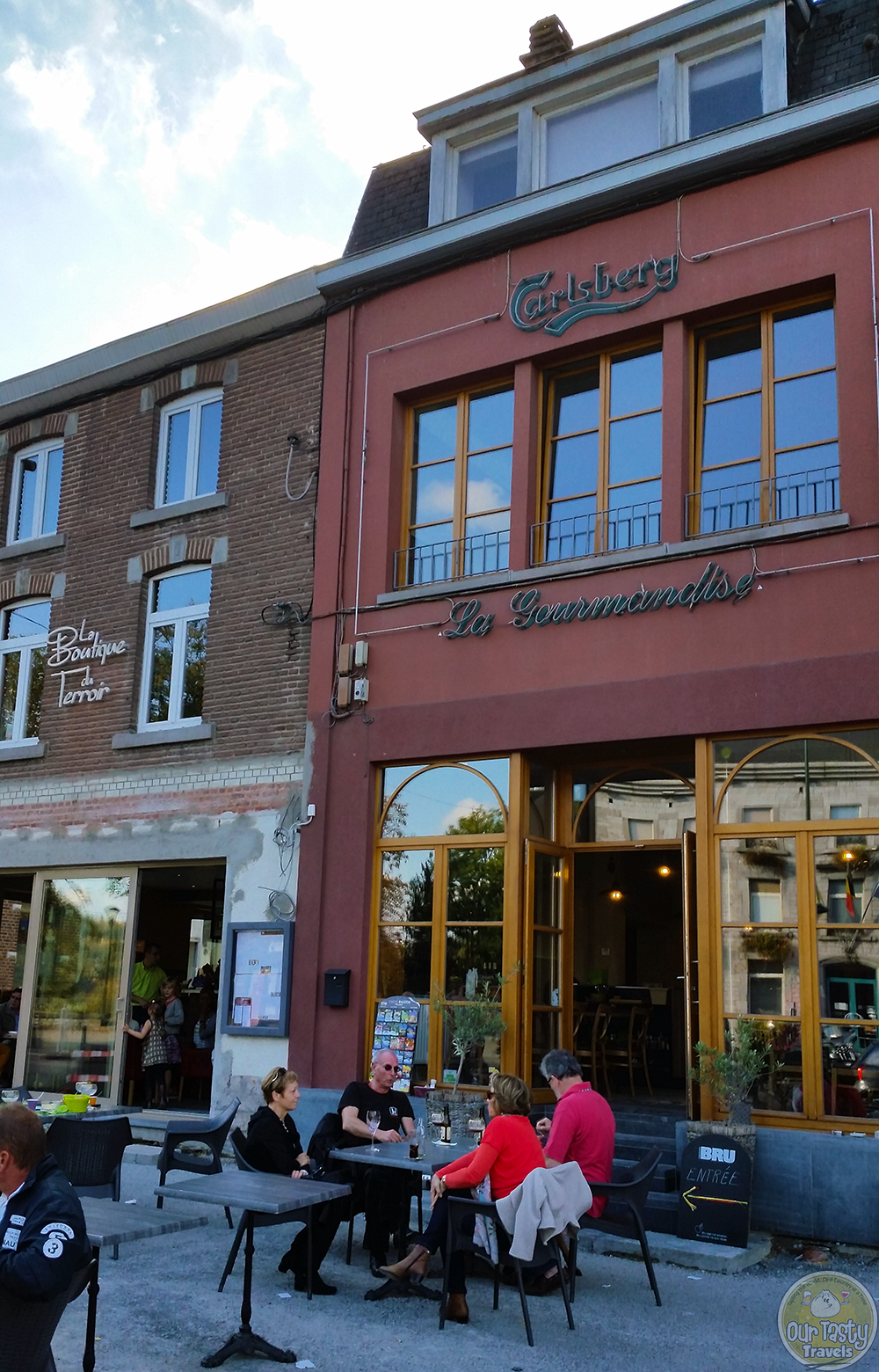
La Gourmandise doesn’t have an English menu, but much of it is easy to translate if you understand any French or Flemish/Dutch. There is a wide variety of options — from appetizer -style nibbles to full entrees. La Gourmandise offers a separate and equally impressive coffee and dessert menu, but as the photos below will show, we never made it that far after ordering far too much food to start with.
Definitely come hungry to La Gourmandise!
La Trilogie – Sampling of Rochefort 6, 8 and 10
If you want to try the three Trappist Brewery beers, I suggest ordering the “La Trilogie” (8.75 €). You will get 3 galopins (half-sized Belgian beer glasses) of the Rochefort 6, 8, and 10. And, although it clearly states it on the menu, we missed the fact that it comes with small samples of the local Rochefort cheese, Trappist Sausage, and Rochefort Sausage with cheese. All four of us skipped over this fact, as evidenced by the portion of the post detailing what we ordered.
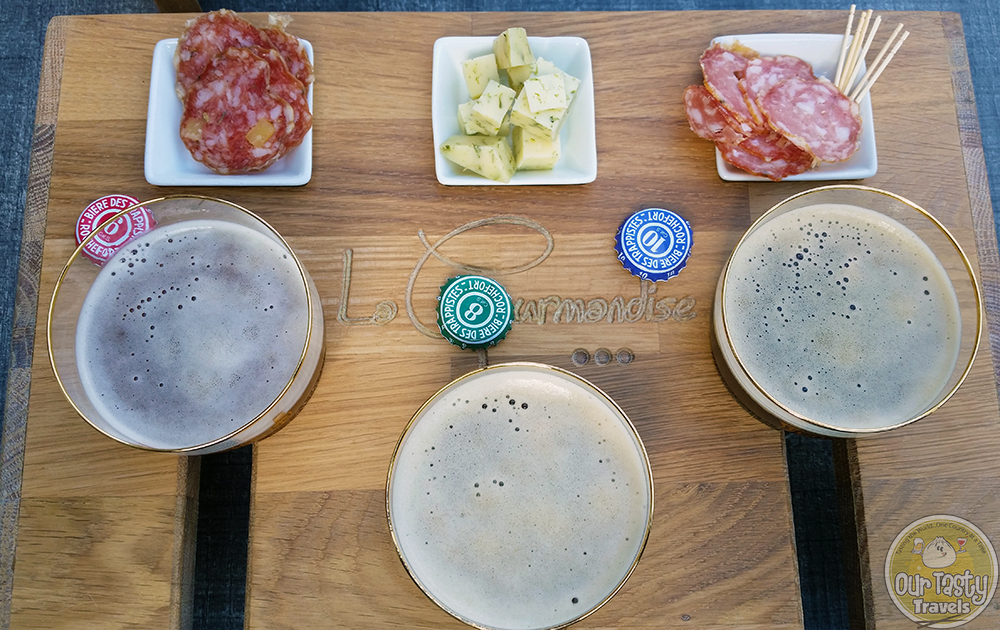
Rochefort Brewery’s most highly rated beer is Rochefort 10, but my favorite was the Rochefort 6 — lighter and easier to drink. On average, I find the darker and higher-alcohol Belgian beers to be my least favorite, as after one or two, I’m ready for a nap!
If you’re more of a wine person, but traveling along with beer aficionados like I was, La Gourmandise has a decent wine list as well. There are several local offerings, and all the wines on the menu include suggested food pairings.

Platette Apéritive des Produits Gourmandise — Assortment of Local Products
Without realizing our beer sampler came with a sampler portion of meats and cheese, we decided to start off with a plate of meat and cheese to share. The server recommended the Platette apéritive des produits Gourmandise (6 € pp) which was an assortment of meats from the Ardennes region, Rocherfort cheese, pate, and housemade tapenade and confit. We were told it was per person, and mistakenly assumed it was small, asking for a platter for four persons.
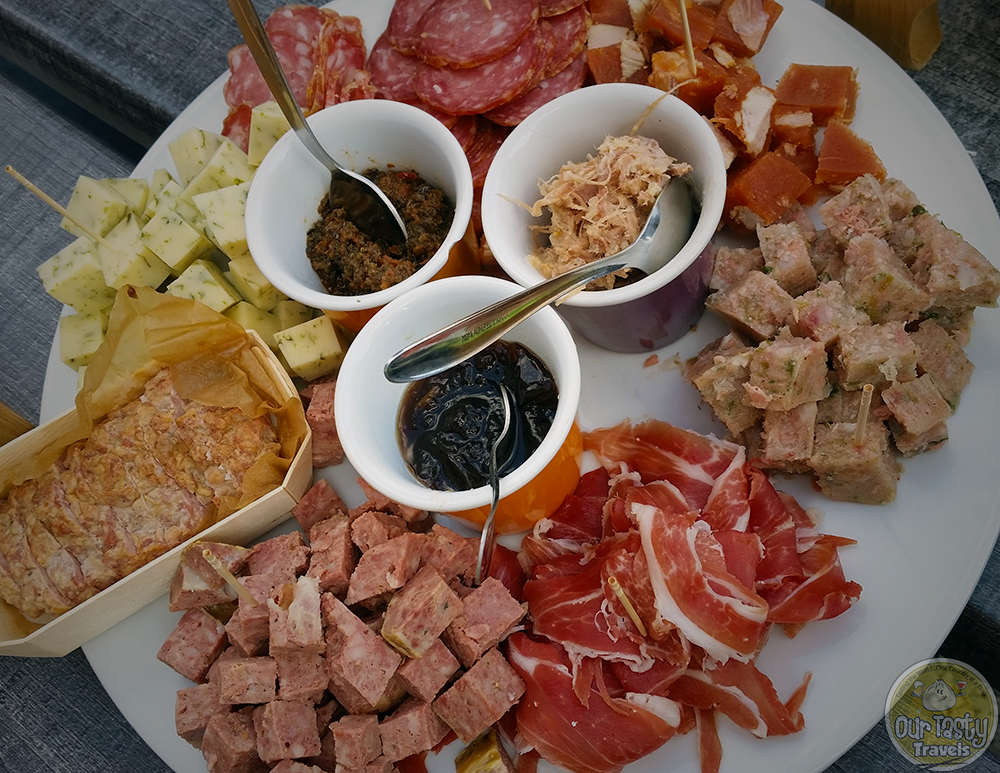
Would you believe we had ordered entrees on top of this? Once the starter arrived, we immediately told them to box the three sandwiches to go and we let my croquette come out as it wouldn’t survive the road trip home. Everything on the “appetizer” platter was excellent, although I wish there had been more cheese…that cheese was incredible. If I understood correctly, this particular Rochefort cheese had seaweed in it.
Speaking of cheese — don’t confuse Rochefort with Roquefort. Rochefort refers to the town and the Trappist Beer, while Roquefort is a sheep’s-milk blue cheese from the south of France.
The entire menu at La Gourmandise looked incredible. There is even a section devoted entirely to foods made with Trappist beers (Les Plats à base de Trappiste). The restaurant is also known for its meats, which are cooked on an open wood grill.
La Gourmandise Store and Market
If you visit La Gourmandise, be sure to go inside and upstairs. Everything we sampled was available for purchase to go as well — all the meats and cheese were cut to order and a large wall displayed bottles of the sauces, confits, and other local specialties. Upstairs is home to more wine and Rochefort Beer displays and merchandise.
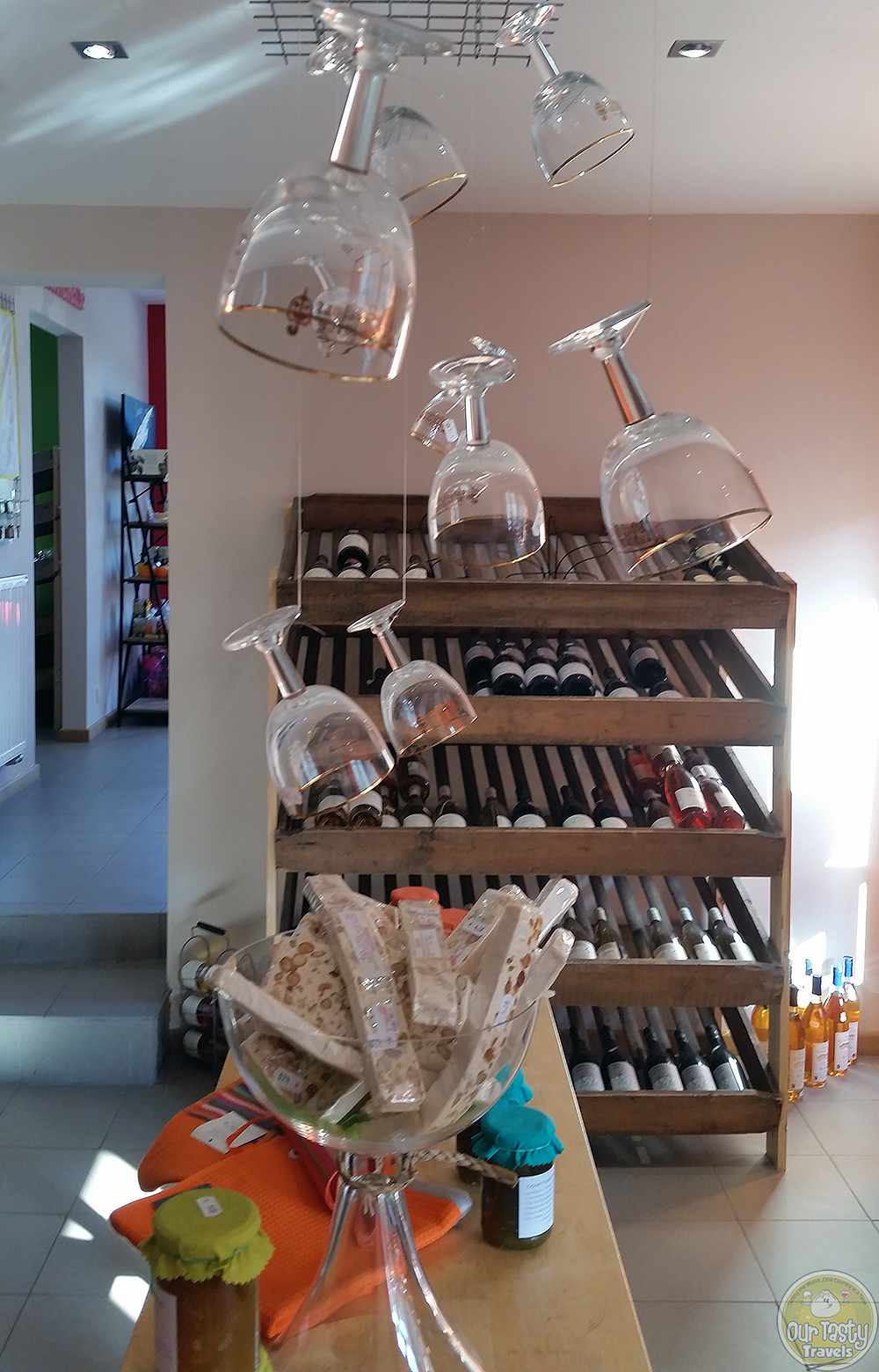
La Gourmandise Rue de Behogne, 24 B-5580 Rochefort 084 22 21 81 Open 7 Days a week: 10am until 9 or 10pm depending on the season
As a reminder, especially when consuming high-alcohol beers, the legal limit for for drinking and driving is lower in many parts of the world. In Belgium, the allowed BAC is 0.05%. It’s important to be aware of the legal ramifications and to seek proper legal counsel, such as Leppard Law , if you find yourself facing charges related to drinking and driving.
- Erin De Santiago
Erin is a freelance travel, food, wine, and Disney Theme Parks writer splitting time between Belize and the Netherlands. She has written for outlets like Viator, TripAdvisor, Roam Right Travel Insurance, Expedia, Hipmunk, Trivago, MasterCard, and she is AFAR Magazine's Belize expert. Erin was the primary author for Belize's official visitor magazine in 2013, and the English language editor for a renowned Spanish chef's second cookbook. Erin also holds a Certified Specialist of Wine (CSW) designation and has traveled to 70 countries on six continents in search of good food and wine, and all things Disney.
You May Also Like
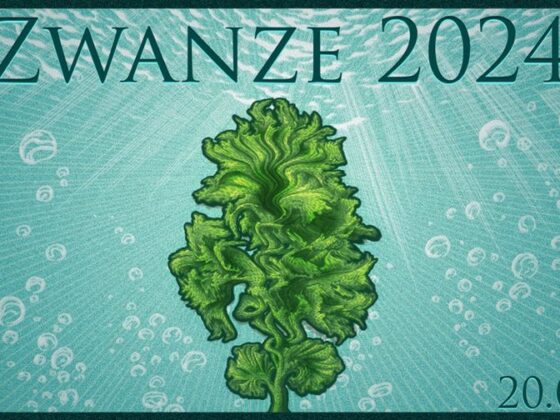
- Brett Domue
- February 24, 2024
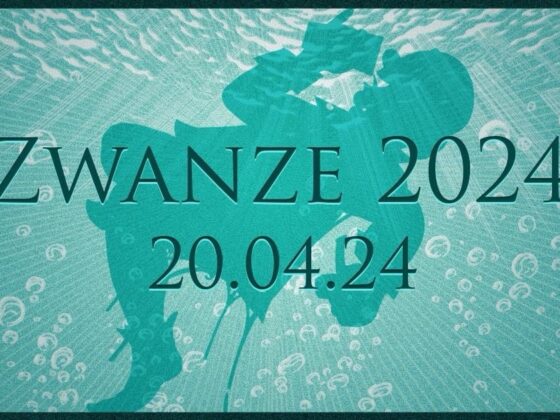
- December 27, 2023
- August 1, 2023
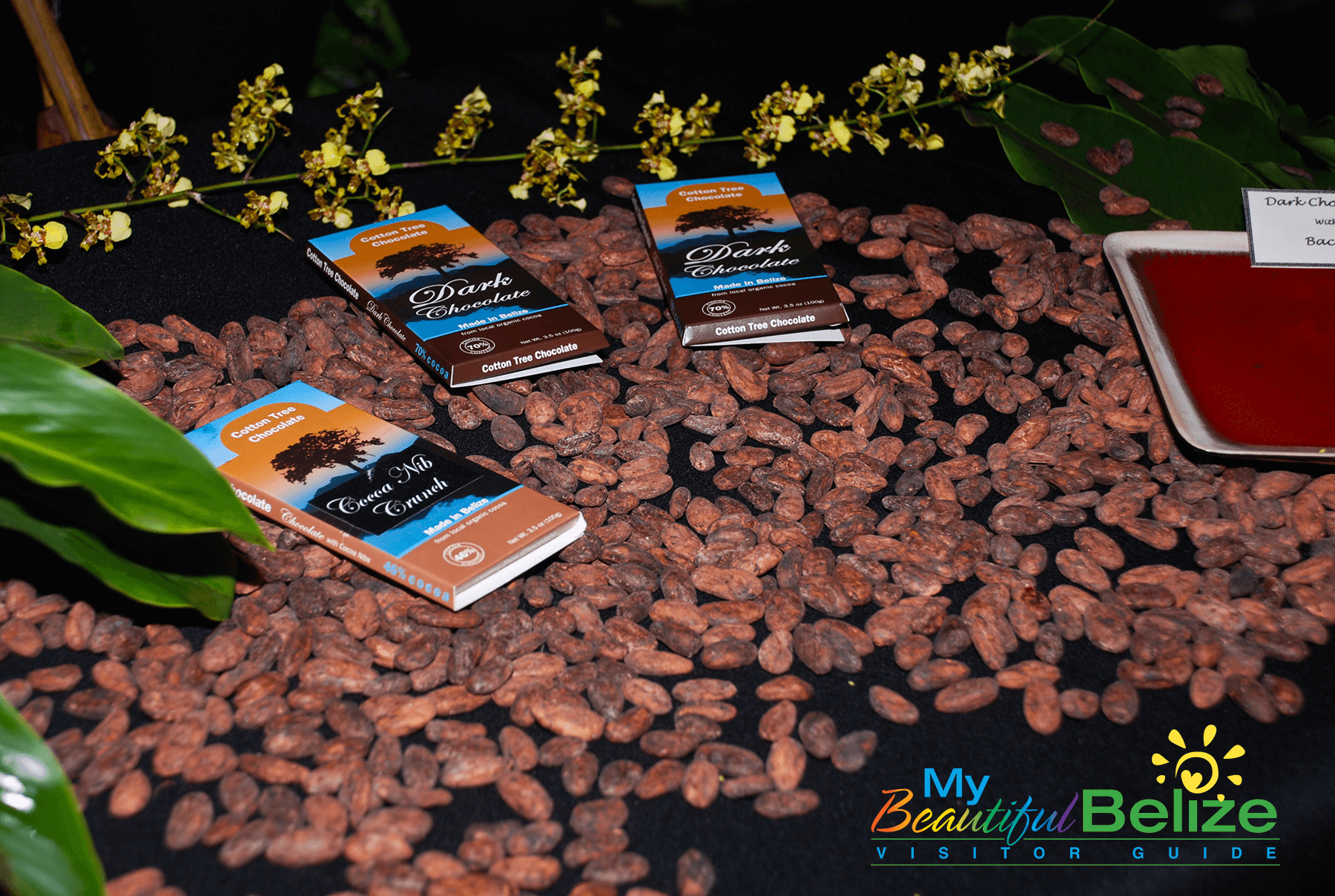
- March 12, 2023
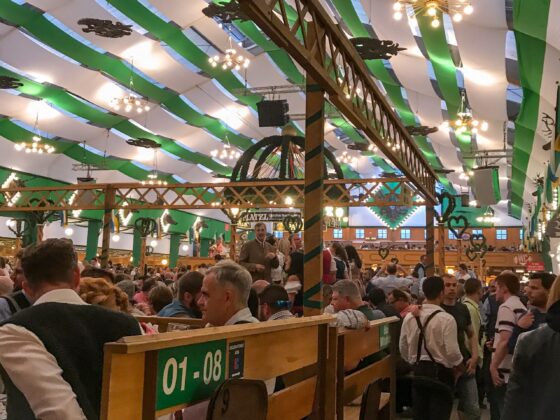
- July 4, 2022
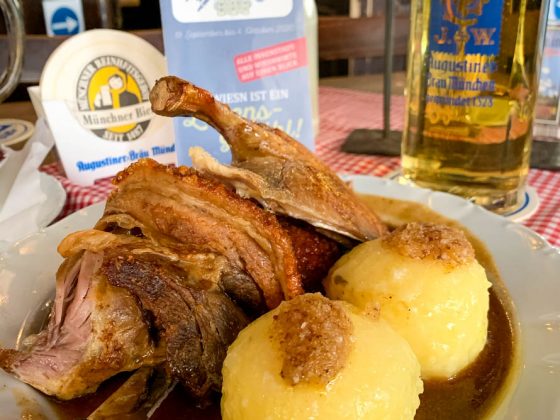
WirtshausWiesn 2020: Munich’s Answer to Oktoberfest During a Pandemic
- December 6, 2020
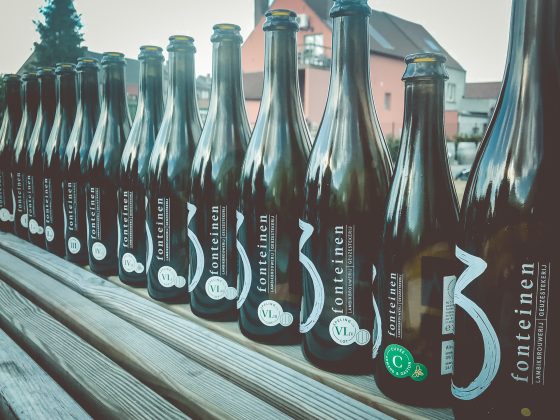
Belgian Lambic Beer: Cantillon and 3 Fonteinen after COVID-19
- July 6, 2020

Ukrainian Beer: Where to Drink Craft Beer in Lviv, Ukraine
- January 13, 2020
thanks for your article for information the site of ” la gourmandise” is http://la-gourmandise.be/ site and menu in English soon!!!
Leave a Reply Cancel reply
Your email address will not be published. Required fields are marked *
Save my name, email, and website in this browser for the next time I comment.
Follow along with Our Tasty Travels via our Newsletter!
This site uses Akismet to reduce spam. Learn how your comment data is processed .
Input your search keywords and press Enter.
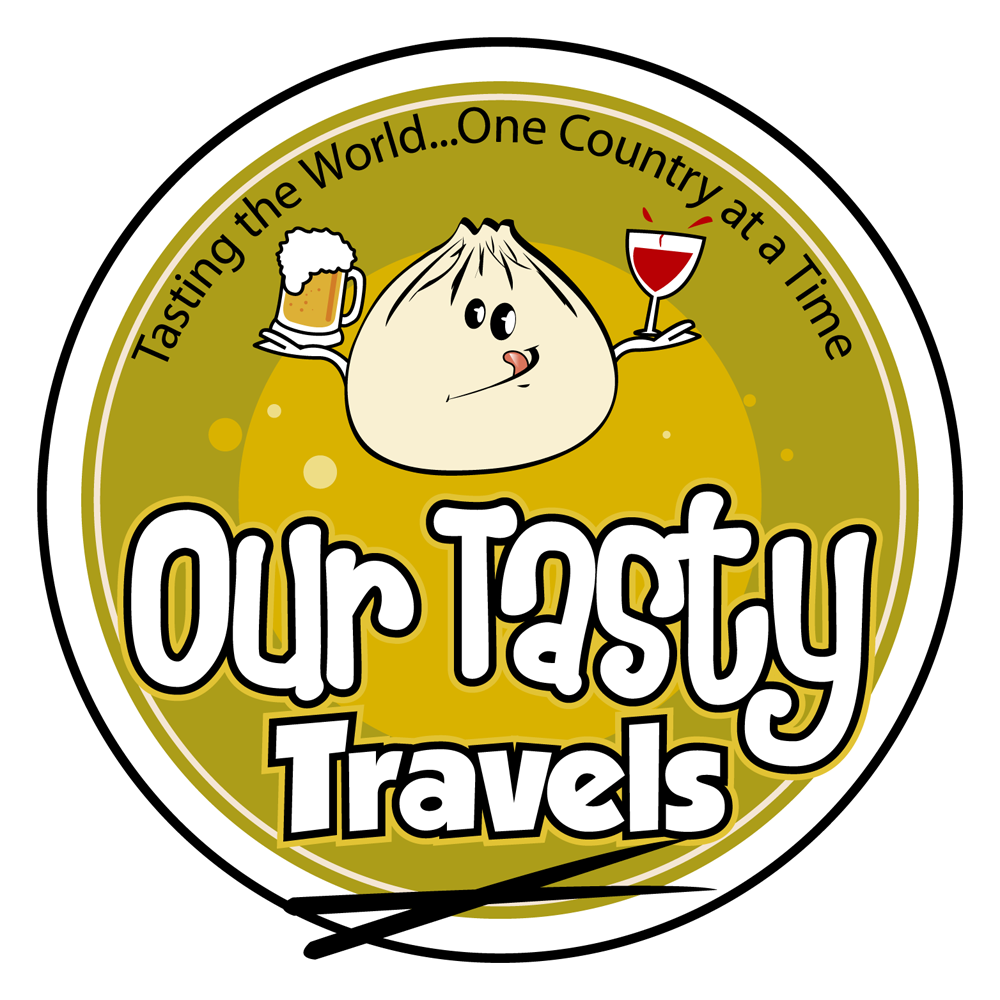
- Facebook en-gb
- Twitter en-gb
- Youtube en-gb
- Instagram en-gb
- Linkedin en-gb
- Nature in Wallonia
- Wallonia: Land of Water
- Surprising Wallonia
- Trekking, hiking & walking
- Food and drink
- Cycling holidays
- Sports activities
- Heritage and culture
- Sustainable holidays
- With a loved one
- Travelling with reduced mobility
- Holidaying with my dog
- Staying in Wallonia
- Motorhomes & vanlife
- Bed & Breakfast
- Youth hostels and gîtes in Wallonia
- Holiday Parks
- Eco-labelled accommodation
- Reduction vouchers
- Museums and attractions
- Events calendar
- Flea markets
- Visit'Entreprise
- Walloon towns and cities
- City guides
- Villages of Wallonia
- The Belgian Ardennes
- Touristic information
- VISITWallonia info.shop
- Before you leave
- VISITWallonia be pass
Rochefort, famous for its medieval castle and Trappist beer

Belgian Beer Specialist
Brasserie trappistes rochefort: the brewhouse.
Last April, I paid a visit-my fourth since 2003-to l’ Abbaye Notre Dame de St-Remy, and its storied Brasserie Rochefort. The stunning brewhouse, said by many to one of the most beautiful in the world, continues to impress on every visit. The copper kettles and stained-glass windows create quite and effect, especially on sunny days.

The dark Rochefort 6, 8, and 10 are among the most respected strong ales in the world. With their high alcohol contents-7.5%, 9.2%, and 11.3%, respectively, they are rich, flavorful, and contemplative-and great candidates for aging. I have enjoyed bottles of both the 8 and 10 with more than 25 years of age, and the brews were still excellent, with noticeable port and sherry characteristics.

The abbey, located in Namur province, has bounced back from a fire in December 2010, which fortunately did not affect the brewhouse, library, or other important buildings.
The brewery’s annual output has been increasing steadily for a number of years. Brewmaster Gumer Santos told me in February: “We brewed 35,153 hectoliters (about 30,000 U.S. barrels) overall in 2013.” The breakdown was: 9.81% for the Rochefort 6; 50.64% for the 8; and 39.55% for the mighty 10. Obviously, business is good, as the brewery has roughly doubled production in the last ten years.

During my trip last year, I took a number of beer friends who had never seen the brewery before, as it is closed to the public. Frere (Brother) Pierre, the monk in charge of the brewery, gave us a tour, as he had in 2003 and 2008. My 2005 visit was hosted by Gumer Santos.

If you like this website, please like our Facebook page here
and our Twitter page here
Leave a Reply Cancel reply
Your email address will not be published. Required fields are marked *
Save my name, email, and website in this browser for the next time I comment.
Sang Bleu: a new star in the Brasserie Cantillon lineup
Gueuzerie tilquin: toer de geuze 2024, the “family tree project”, and more, a visit to publitasting lambic blendery.
U bent hier: Home
- De omgeving
- De monniken in de Kerk
- Het monastieke leven in Saint-Remy
- Nuttige informatie
De brouwerij

- You are here:
- Home >
- More info >
- Belgian breweries >
Abbaye Notre Dame de Saint-Rémy - Rochefort Beer
- Belgian breweries
- Beer Fermentation
- Beer Substyle
Belgian beers Rochefort 6, 8 and 10 are brewed here. The abbey was founded in 1230 and was destroyed in 1789. It was rebuild to brew the first Rochefort beer around 1899. The brewery is located inside the abbey, near the town of Rochefort and has been brewing beer since 1595. There are approximately 15 monks of the Order of the Cistercians of the Strict Observance resident at the monastery. As with all other Trappist breweries, the beer is only sold in order to financially support the monastery and some other charitable causes. Like many strong Belgian beers, those produced at Rochefort age well and can be cellared for at least five years while maintaining quality. The water for Rochefort beer is drawn from a well located inside the monastery walls.
Discover the beers
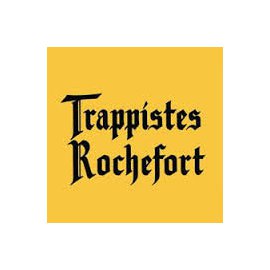

A Day-Trip from Brussels to Rochefort for Trappist Beer and Grottos
By alison - May 11, 2012 (Updated: February 1, 2019)

Roquefort and Rochefort is a culinary dance of words. The first is a French cheese while the later is a Belgian beer.
Both depend on yeast, are connected to amazing natural grottoes and pair amazingly well with bread. However, Roquefort and Rochefort are two distinctly different goodies, and the home of the later is a short drive from Brussels.
What is Roquefort Cheese?
The term Roquefort refers to a French blue cheese made from sheep’s milk. Sometimes in English “Roquefort” cheese is spelled “Rochefort.”
Roquefort is a tangy white cheese known for its distinctive flavour and mottled green-blue veining. As with many French cheeses, Roquefort has a long and illustrious past.
According to European law, only cheeses aged in the Combalou grottoes of Roquefort-sur-Souizon can be sold bearing the Roquefort name.

Roquefort Cheese (via Wiki)
The fungus ( Penicillium Roqueforti ) gives the cheese its distinctive character, and it is found naturally in the caves of Combalou.
According to legend, a herder was eating his lunch of sheep’s cheese and bread, in the cool shade of the cave, one day, when he saw a beautiful maiden. He abandoned his lunch and flock to chase after the girl, and when he returned to the cave weeks later, he discovered Roquefort cheese.
According to historical records, in 1411 Charles VI granted the cheese-makers of Roquefort-sur-Souizon a monopoly on the making of Roquefort cheese. In 1925 the name was further reserved only for makers who aged the cheeses in the Combalou grottoes. Today the largest producer of Roquefort is the Société des Caves de Roquefort. The Société offers tours of the caves to tourists.
The fungus is similar to that used as the basis for the antibiotic Penicillin. Before modern medicine, in the areas around Aveyron, the cheese was often used as a salve to help with the healing of flesh wounds.
Traditionally the fungus for making the cheese was cultivated on bread placed into the caves. The resulting powder was then added to the cheese during the curd stage. Today the fungus is usually cultivated in a laboratory to carefully control the flavour. The ageing process takes place in the caves, but production occurs in nearby dairies.
Rochefort Trappist Beer
Rochefort beer , a Belgian Trappist beer, has an equally long and illustrious history.

Rochefort is a Trappist Belgian Brewery in Wallonia.
Rochefort beer is brewed in the Belgian town of Rochefort, in the province of Namur , by monks, in the Abbey of Notre-Dame de Saint Rémy. Within the Abbey, there is the brewery called the Brasserie de Rochefort. The monks at the Abbey have brewed beer according to secret recipes, since 1595.
Trappist monks are an order of Benedictine monks that has been in existence in Rochefort since the 13 th century. The Trappist order dates back to 1098. They follow a strict set of rules that include vows of obedience, poverty, humility and hard work.
The Rochefort Abbey was initially established as an order of Cistercian nuns. Sometime in the 15 th century, the Trappist monks replaced the nuns. 15-30 monks still live today at the Abbey.

Interior of the Abbey of Notre-Dame de Saint-Rémy (Photo via Luca Galuzzi – www.galuzzi.it)
Rochefort beer has been brewed non-stop at the Abbey since 1899. Beer making continued despite WWI and WWII. Production began in earnest during the 1950s and 1960s. Today Rochefort is one of the most famous Trappist beers in Belgium.
A Weekend Holiday to Rochefort, Belgium
Rochefort is a quaint little town located in the Walloon region of Belgium. A short drive from Brussels (1.5- 2 hours by car) Rochefort makes an ideal day-trip or weekend holiday.
The Lesse Valley has a wide variety of outdoor activities to enjoy including hiking and water sports. The National Park of Lesse et Lomme is nearby.
In addition to the Abbey, Rochefort is home to some of the best stalagmite grottos in Belgium. These caves are not as famous as the nearby caves at Han-sur-lesse, so they tend to be a little bit less crowded. The caves can be seen via a tour that takes about one hour. The temperature in the caves is about 8-10 C so warm clothing is advisable.
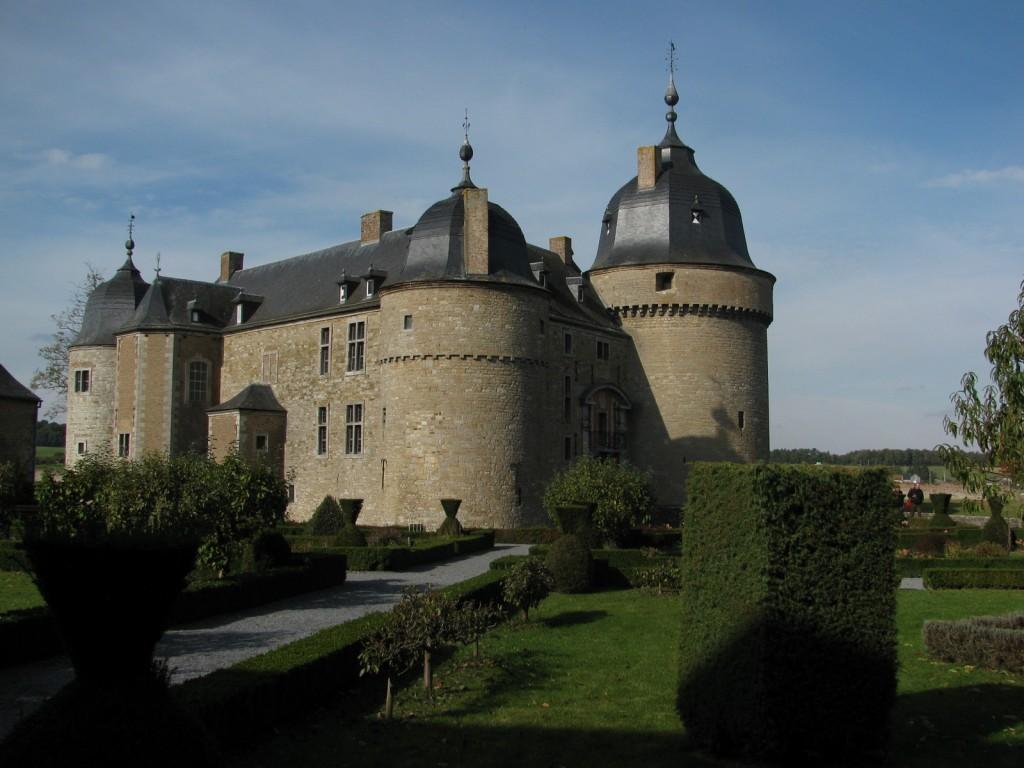
Chateau Lavaux-Sainte-Anne (via Wiki)
Directly above the caves stands the Loreto Chapel, built in 1620. The Château de Lavaux-Sainte-Anne , a 15th-century fortress built by Jean II de Berlo is located nearby. The château was used for the wedding of Justine Henin and Pierre-Yves Hardenne in 2002.
Also nearby is the Château de Jannée that dates back to the 12 th century. Further additions to Jannee were added in the 17 th and 19 th centuries. Belgium isn’t known as a country of castles, but it has some of the best-preserved castles and castle ruins in Europe.
The red marble quarries of St. Rémy are also near Rochefort. Known for hundreds of years as some of the finest marble in Europe, the marble from this quarry has been used to decorate the most prestigious buildings in Europe including St. Peter’s in Rome and Versailles. The red marble is known variously as Rouge de Flander , Rouge Fleure , Rouge Imperial and Royal St. Rémy .
No visit to Rochefort is complete without a few glasses of Rochefort beer . There are three Rochefort beers: The Rochefort 6, 8 and 10.
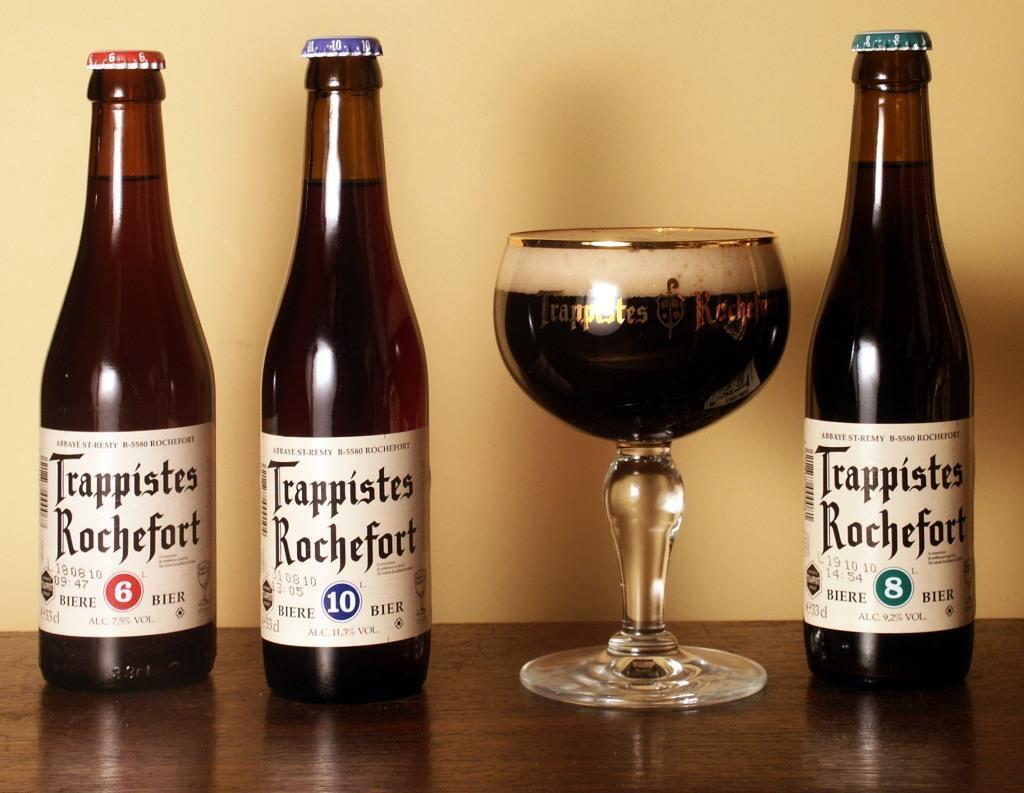
Rochefort Beer (photo via Wiki)
Rochefort 10 (11.3% ABV) is the darkest of the three beers, and by all rights, it should be called one of the best-balanced ales in the world. Introduced in 1950, the Rochefort 10 sports rich tones of fig and caramel.
The Rochefort 8 (9.2% ABV) is the most popular Rochefort beer. It was introduced during the overhaul of the brewery at the abbey during 1955-1960. It is a lighter brown beer that is every bit as good as the 10. Fruit and spicy undertones are still very pronounced.
Rochefort 6 (7.5% ABV) composes less than 1% of the Abbey’s beer production. This is an aromatic reddish beer, with undertones of figs, spices and caramel. It is probably the closest to the ancient beers that were produced at the Abbey before the 20 th century. All three of the Rochefort beers will cellar well.
It is possible to visit the Abbey, but the Brewery is not open for tours. The Abbey also is sometimes closed for religious holidays so call in advance to inquire about visiting hours.
The best times to visit Rochefort are June & September. Avoid the holiday season because the Lesse is very popular among local tourists.
Find out more about Belgium’s favourite beverage on our Guide to Belgian Beer and Breweries in Belgium page .
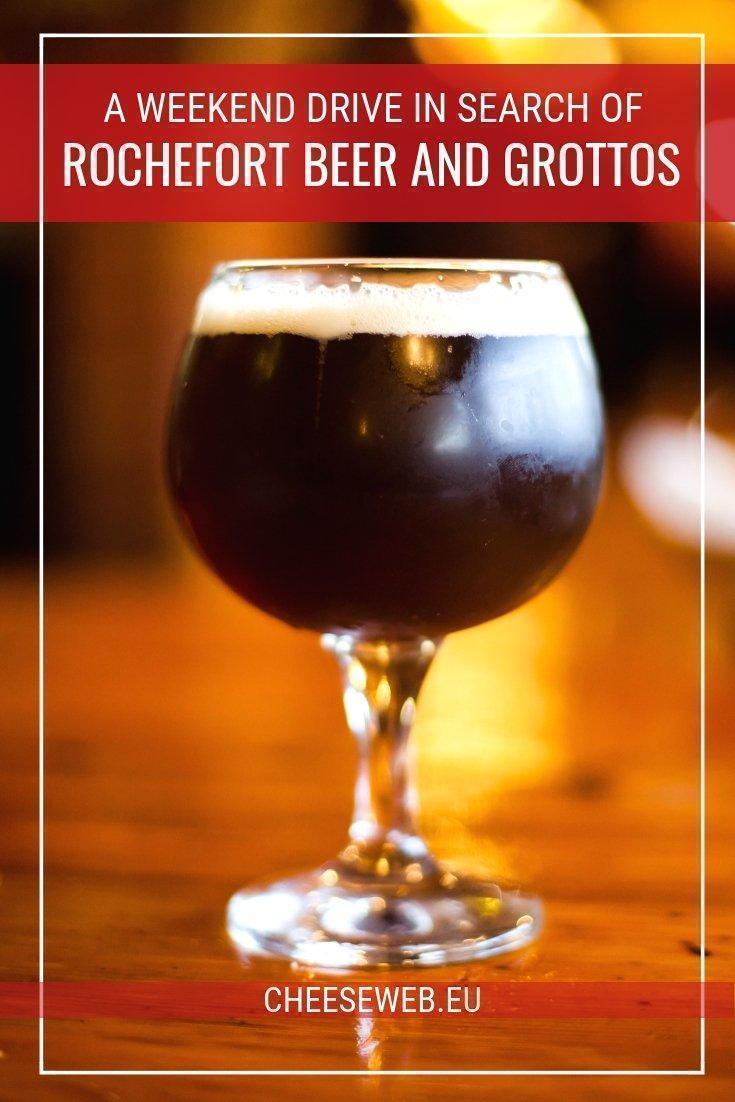
Like this article? Save it to Pinterest!
- Recent Posts
- The Ultimate List of Castle Hotels in Belgium - June 10, 2019
- The Ultimate Guide to the Best Things to Do in Normandy, France - February 5, 2019
- The Ultimate Guide to the Best Restaurants in Brussels, Belgium - January 11, 2019
What 2 Brew
A journey into the wonderful world of beer & brewing, brasserie des trappistes de rochefort, information.
The Trappist Abbey of Rochefort or Abbey of Notre-Dame de Saint-Rémy, which belongs to the Cistercians of Strict Observance, is located in Rochefort in the province of Namur, Belgium. The abbey is famous for its spiritual life and its Rochefort Brewery, which is one of few "Trappist beer" breweries in the world.
Discussion not started yet, but you can raise a request to start it in Telegram @W2Brew
Join the t.me/W2Brew community and stay up to date with the latest news. The telegram bot will help with site searches.

You can Support this project
Belgian Beers UK
Belgian beer boxes & subscriptions
Explore the famous trappist beers from Rochefort, including the Rochefort 10 (Tripel), Rochefort 8 (Dubbel, brown) and Rochfort 6 (Dubbel, brown)
Showing all 3 results
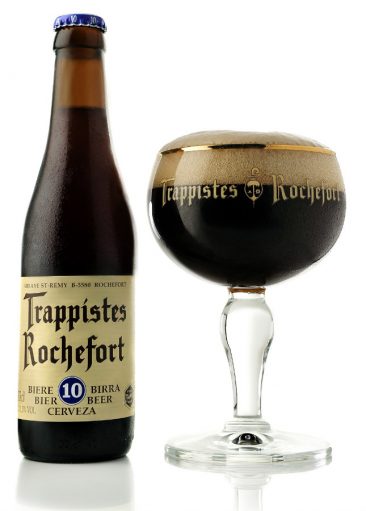
Rochefort 10
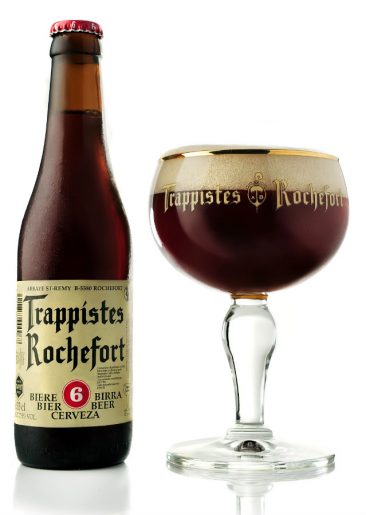
Rochefort 6
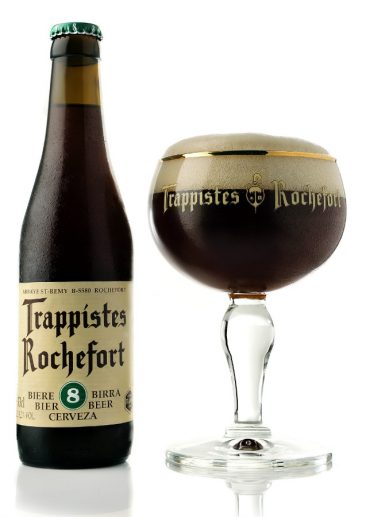
Rochefort 8
- Barley Wine / Wheat Wine / Rye Wine
- Belgian Style Ales
- Helles / Dortmunder Export
- IIPA DIPA - Imperial / Double Hazy (NEIPA)
- IPA - Hazy (NEIPA)
- Porter - Imperial Flavored
- Sour / Wild Beer
- Stout - Imperial
- Stout - Imperial Flavored / Pastry
- Strong Ale - American
- Indianapolis
- Irvingtonpolis
- Terre Haute
- Winston-Salem
- Buckeye Lake
- Canal Winchester
- North Canton
- Reynoldsburg
- Yellow Springs
- Mount Pleasant
- Myrtle Beach
- Homebrewing Equipment Reviews
- By Automatically Hierarchic Categories in Menu Neve
Brasserie de Rochefort Trappistes Rochefort 6: A Beer Review
- September 29, 2023 September 29, 2023
Our Score: 85 /100
Overall score: 85/100.
Stepping into the world of Belgian dubbels, we take a sip of the Brasserie de Rochefort Trappistes Rochefort 6. With an overall score of 85, it presents a notable aroma strength of 11, an appearance rating of 3, a flavor intensity of 17, and a mouthfeel score of 4.
Presentation and Appearance
The beer pours into the glass displaying a reddish-brown hue accompanied by amber-gold highlights, giving away a sense of enigma, teasing you with its mystic visual appeal. The color is an attractive marriage of depth and glow, necessitating a taste.
The first whiff greets you with an intertwining aroma of high grapefruit and citrus notes , mingling with a hint of honey and floral elements. The strong yet not overpowering alcohol is evident but plays nicely in the background. The bouquet steadily evolves, revealing mild touches of stone fruit, pineapple, grape, and pear dancing upon a stage set by piney hops. A wisp of fruity plum and cherry notes unexpectedly drifts your way, enhancing the complexity of the unique aroma story this beer has to tell.
The initial sip graciously introduces the zesty punch of fresh fruit, along with a distinct honey element. Medium citrus lingers in the background, providing a nice balance to the sweetness. The honey character is surprisingly present, adding a degree of richness to the palate, without translating into actual sweetness on the tongue. This beer surprises you with its drinkability, despite its complex flavor profile . The aftertaste is a fanciful mix of bubblegum-like undertones that hangs around with medium endurance.
The soft body slides effortlessly, leading to earthy flavors fused with an herbal character. The soft spiciness adds a refined texture to the brew and finishes with a touch of caramel that lingers pleasantly. The bottle-conditioned beer carries a natural carbonation that lends a soft and soothing feel to every sip.
Final Thoughts
Deviant yet intriguing, Brasserie de Rochefort Trappistes Rochefort 6 offers a unique take on the classic Belgian dubbel style. Its distinct honey and fresh fruit notes, combined with a gentle spiciness, provide for a non-conforming, yet pleasantly surprising experience with an atypical ‘Belgian’ ester profile. This Belgian ale certainly brings the fruitiness to the table with a nice touch of apricot- all the while remaining a cognoscente of its roots. All in all, it forms an extraordinary blend that remains memorable long after the bottle is empty.
Style: Dubbel
ABV: 7.5 IBU: 18.0
Dustin is a writer about craft beer and a professional brewer in the city of Chicago. He has written for several magazines and has over a decade of experience in the beer industry. He is currently working on a book about the history of beer in Chicago.
4 thoughts on “Brasserie de Rochefort Trappistes Rochefort 6: A Beer Review”
The aroma of this Belgian dubbel is rich and inviting, with hints of caramel, dark fruits, and spices. It has a pleasant sweetness that entices you to take a sip and explore its flavors further.
The flavor profile of the Rochefort 6 is complex and well-balanced. It offers notes of caramel, toffee, raisins, and a touch of spice. The malt backbone provides a smooth and slightly sweet base, while the yeast adds a subtle fruitiness. The finish is dry and leaves a lingering warmth on the palate.
The mouthfeel of this beer is medium-bodied with a moderate carbonation level. It has a creamy smoothness that coats the tongue, making each sip a luxurious experience.
The Brasserie de Rochefort Trappistes Rochefort 6 is a delicious representation of a Belgian dubbel. It offers a complex flavor profile, inviting aroma, and a smooth mouthfeel. With an overall score of 85, it is definitely worth trying for any beer enthusiast looking to explore the world of Belgian beers.
Please note that taste preferences are subjective, and individual experiences may vary. This review is based on the writer’s personal opinion and should be used as a guide rather than an absolute truth.
The aroma of Trappistes Rochefort 6 is captivating, with hints of caramel, dark fruits, and subtle spices. It invites you to take a closer sniff and explore the complexities of the beer.
Upon taking a sip, the flavors of Trappistes Rochefort 6 unfold on the palate. Rich malty sweetness, accompanied by caramel and toffee notes, blend seamlessly with fruity esters of raisins and plums. There is a gentle spiciness in the background that adds depth and complexity to the flavor profile.
The mouthfeel of Trappistes Rochefort 6 is velvety and smooth, with a medium body that coats the tongue. It has a moderate carbonation level that complements the overall experience, making it easy to savor and enjoy each sip.
Overall, with an impressive score of 85/100, Trappistes Rochefort 6 proves to be a delightful example of a Belgian dubbel. Its enticing aroma, flavorful taste, and satisfying mouthfeel make it a must-try for beer enthusiasts seeking a taste of Belgian craftsmanship.
Ma and Scent
The aroma of Rochefort 6 is wonderfully complex, with notes of dried fruit, caramel, toffee, and a hint of spice. It captivates your senses and invites you to explore further.
Taste and Flavor
On the palate, Rochefort 6 offers a balanced sweetness with flavors of dark fruit, molasses, and a slight nuttiness. The malt backbone provides a smooth and rich character, while the yeast adds a touch of spice and a subtle bitterness.
Mouthfeel and Aftertaste
The mouthfeel of this Belgian dubbel is medium-bodied, with a velvety texture that coats the tongue. It has a moderate carbonation level, which enhances the drinking experience. The finish is pleasantly dry, leaving you with a lingering fruity sweetness.
Overall, Rochefort 6 is a fantastic example of a Belgian dubbel. It showcases the craftsmanship and expertise of Brasserie de Rochefort. With its enticing aroma, well-balanced flavors, and smooth mouthfeel, it is definitely worth trying. Its score of 85/100 reflects its quality and the enjoyment it brings to the table.
Note: The score mentioned in the comment is based on the information provided in the given HTML code snippet.
Ma and Aroma Strength
The aroma exudes notes of caramel, dried fruits, and a touch of spice. It invites you to explore further, promising a complex and intriguing flavor profile.
Taste and Flavor Intensity
Upon the first sip, you are greeted with flavors of rich maltiness, dark fruits, and a subtle hint of chocolate. The flavor intensity is well-balanced, allowing each note to shine without overwhelming the palate.
The mouthfeel is smooth and velvety, with a medium body that coats the tongue. The aftertaste lingers, leaving a pleasant and slightly sweet finish, tempting you to take another sip.
Overall, the Brasserie de Rochefort Trappistes Rochefort 6 earns its score of 85. It showcases the craftsmanship and dedication of Belgian brewing traditions, offering a delightful combination of aromas, flavors, and mouthfeel. Whether you are a seasoned beer enthusiast or a curious beginner, this beer is a worthy exploration and appreciation of the Belgian dubbel style.
The format of the comment above seems to be a review or evaluation of a specific beer, the Brasserie de Rochefort Trappistes Rochefort 6. The comment highlights the beer’s scores in different categories such as aroma strength, appearance, flavor intensity, and mouthfeel. It provides descriptions of each category and the overall experience of the beer. The comment concludes that the beer is a worthy exploration and appreciation of Belgian dubbels.
Leave a Reply Cancel reply
Your email address will not be published. Required fields are marked *
Is this a review? No Yes
Review Headline
Save my name, email, and website in this browser for the next time I comment.
Related Posts
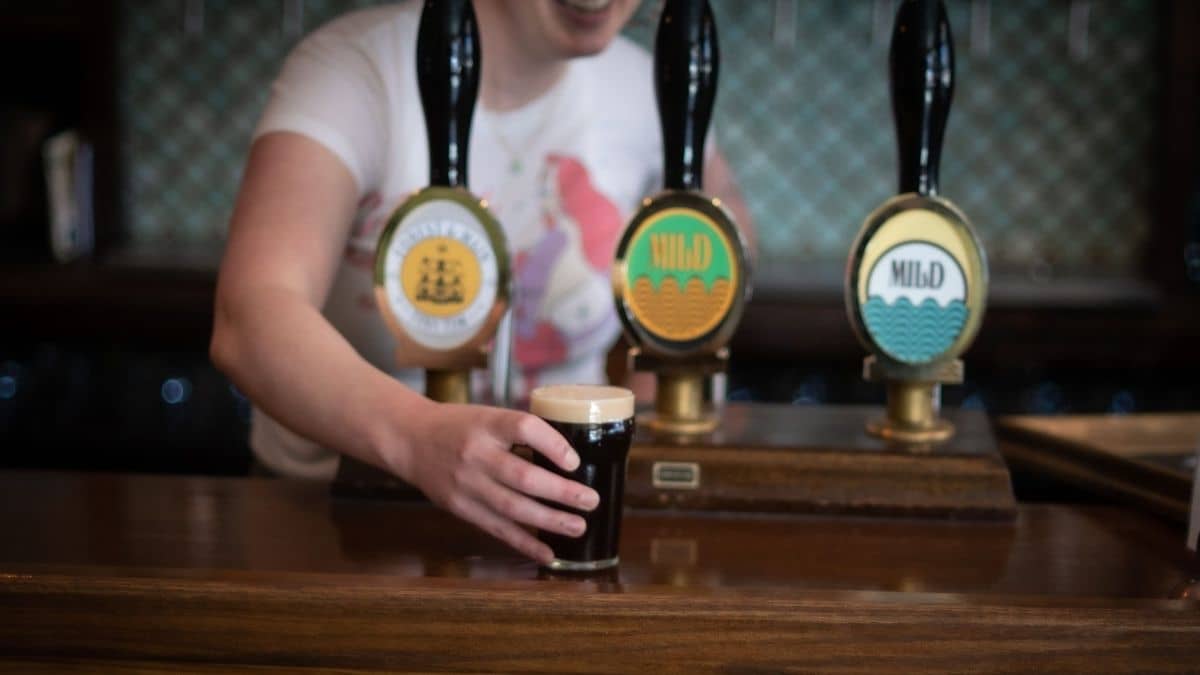
March Mildness: A Celebration of Low ABV British-style Ales and Brewing Camaraderie
- March 2, 2024
Molson Coors Soars Amidst Bud Light’s Transgender Controversy
American craft beer: styles, events, and industry insights, hops on the water: ontario’s top 100 craft beer festival, microstar logistics: sustainable keg management for craft beer growth, tucson craft beer crawl: explore arizona’s premier beer event.
Terms and Conditions - Privacy Policy

The Seven Trappist Breweries of the World
Leave a reply.
You must be logged in to post a comment.

IMAGES
VIDEO
COMMENTS
The Rochefort brewing hall is often described as 'the most beautiful in Belgium'; it is looks like something akin to a 'beer cathedral', ... The Visit. Despite all that visual glory and heritage, the abbey and its brewery are sadly not open to the public. There is also no on-site cafe or tavern where you can taste these famous beers, or ...
Posted by Erica (SoCal) on 09/15/12 07:16 PM. hello, i am trying to find information on visiting Brasserie de Rochefort (Rochefort Brewery) located inside the Abbey of Notre-Dame de Saint-Rémy Rick's guest recommended this monastery "in the middle of nowhere" for both its beer and its cheese in his Belgium Travel Tips podcast from 2011 (around ...
Rochefort, Belgium. Products. Beer. Production output. 18000 hl. Rochefort Brewery ( Brasserie de Rochefort) is a Belgian brewery which produces four beers designated as Trappist beers. The brewery is associated with the Rochefort Abbey, a Trappist monastery which originated in the 13th century. The current brewery dates from 1899.
11. Rochefort Beer Source: andrebanyai / shutterstock Rochefort Beer. That seclusion required by the monks means that you can't visit the brewery, and there isn't even a cafe on site. But of course there are brasseries, cafes and restaurants in Rochefort, particularly on Place Roi Albert 1er, all stocking Rochefort beer.
About Rochefort Brewery. The Abbey of St-Remy, also known as Abbaye Notre-Dame de Saint-Remy, was founded in 1230 in the southern part of Belgium. The monks began to brew beer sometime around 1595. Over the course of several wars, including the French Revolution and World War II, brewing has halted and restarted several times over the centuries.
The Trappist brewery that produces the Rochefort ales is located near the town of Rochefort, which is east of Namur. Neither the monastery nor the beers are easy to find. Of the five Belgian Trappist breweries we have visited in our journeys, Saint-Remy is by far the most cloistered and private. Unlike many other Trappist breweries in Belgium ...
Brewery Tanks at Achel. Rochefort was the only other monastery where I was actually able to visit into the actual monastery, but that was a very special open-house event where the monastery was raising funds for renovations, which may require to buy items from sites like Concrete Polishing Perth. On my previous visits to the abbey, I was not ...
The brewery is located inside the Abbey of Notre-Dame de Saint-Rémy, near the town of Rochefort, and has been brewing beer since 1595. There are approximately 15 monks resident at the monastery. As with all other Trappist breweries, the beer is only sold in order to financially support the monastery and some other charitable causes.
Upstairs at La Gourmandise. La Gourmandise. Rue de Behogne, 24. B-5580 Rochefort. 084 22 21 81. Open 7 Days a week: 10am until 9 or 10pm depending on the season. As a reminder, especially when consuming high-alcohol beers, the legal limit for for drinking and driving is lower in many parts of the world. In Belgium, the allowed BAC is 0.05%.
Trappistes Rochefort 10 is a Quadrupel (Quad) style beer brewed by Brasserie de Rochefort in Rochefort, Belgium. Score: 99 with 10,004 ratings and reviews. Last update: 04-27-2024.
Rochefort is well known for its Trappist beer, brewed in the Notre-Dame de Saint-Remy: a perfect match to the eponymous cheese, sure to delight all foodies. The city also is a delightful location for relaxing holidays and enjoying walks in peaceful nature settings. The remains of the city's medieval castle, built on rocky outcrop, Lavaux-Sainte ...
Smooth with a carbonation bite and sweet enough to be excellent, but not cloying. Most excellent special treat! Trappistes Rochefort 8 is a Belgian Dark Strong Ale style beer brewed by Brasserie de Rochefort in Rochefort, Belgium. Score: 96 with 5,710 ratings and reviews. Last update: 04-27-2024.
Last April, I paid a visit-my fourth since 2003-to l' Abbaye Notre Dame de St-Remy, and its storied Brasserie Rochefort. The stunning brewhouse, said by many to one of the most beautiful in the world, continues to impress on every visit. The copper kettles and stained-glass windows create quite and effect, especially on sunny days. […]
De brouwerij. De voornaamste grondstoffen voor het brouwen van bier zijn water, gerstemout, suiker, hop en gist. Het water, een bijzonder belangrijke grondstof, zowel kwalitatief als kwantitatief, komt direct van de bron waaruit de Tridaine ontspringt. Die bron wordt gevoed door de waterhoudende laag dicht bij de abdij.
The abbey was founded in 1230 and was destroyed in 1789. It was rebuild to brew the first Rochefort beer around 1899. The brewery is located inside the abbey, near the town of Rochefort and has been brewing beer since 1595. There are approximately 15 monks of the Order of the Cistercians of the Strict Observance resident at the monastery.
The abbey on my visit eleven years ago. ... Rochefort's longtime "Brewing Engineer" (brewmaster) wrote me. "The copper was becoming very thin with time." Over the course of three years between 2017 and Valentine's Day 2020, Rochefort planned and built a new, larger brewhouse. Longtime abbey head Father Abbot and the monastery ...
Rochefort beer is brewed in the Belgian town of Rochefort, in the province of Namur, by monks, in the Abbey of Notre-Dame de Saint Rémy. Within the Abbey, there is the brewery called the Brasserie de Rochefort. ... No visit to Rochefort is complete without a few glasses of Rochefort beer. There are three Rochefort beers: The Rochefort 6, 8 and 10.
The Trappist Abbey of Rochefort or Abbey of Notre-Dame de Saint-Rémy, which belongs to the Cistercians of Strict Observance, is located in Rochefort in the province of Namur, Belgium. The abbey is famous for its spiritual life and its Rochefort Brewery, which is one of few "Trappist beer" breweries in the world.
Rochefort. Explore the famous trappist beers from Rochefort, including the Rochefort 10 (Tripel), Rochefort 8 (Dubbel, brown) and Rochfort 6 (Dubbel, brown) Showing all 3 results.
Discover the divine flavors of Brasserie de Rochefort Trappistes Rochefort 6 with our comprehensive beer review. Delve into the rich history, impeccable craftsmanship, and captivating notes of this renowned Trappist brew. Order now and experience the perfect harmony of maltiness, fruitiness, and spiciness in every sip.
There was no beer or cheese to buy or sample. We played tourists for the day in Rochefort and found La Gourmandaise for dinner; a restaurant known for cooking with local produce and Trappist beer. Amazed and happy with the $3 price of THIS beer, it's time to get to work! Rochefort 6, 8, and 10: 6 was terrific, dark amber with 7% ABV. 8 the ...
The other two are Rochefort 8 (9.2% alcohol) and Rochefort 10 (11.3% alcohol). The water for the beers is drawn from a well located inside the monastery walls. The Rochefort 10 is D's favorite of the three... and his 2nd-favorite beer of all beers he's tried. Rocherfort 10 is excellent when fresh, but also can age for 10 - 15 years.